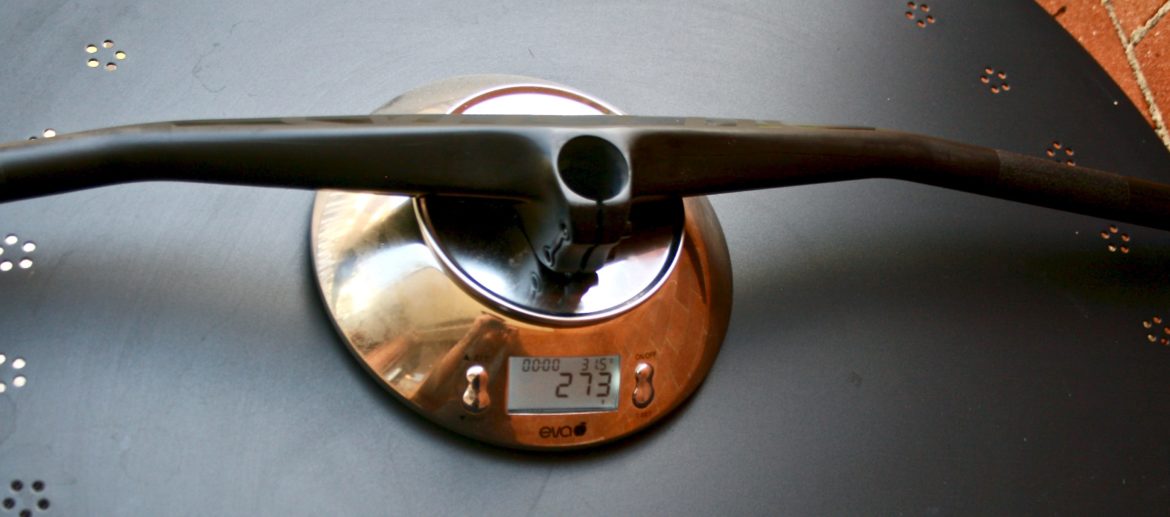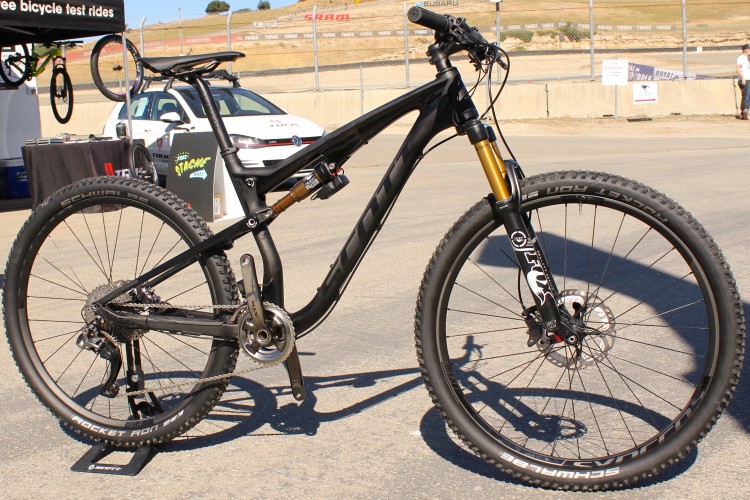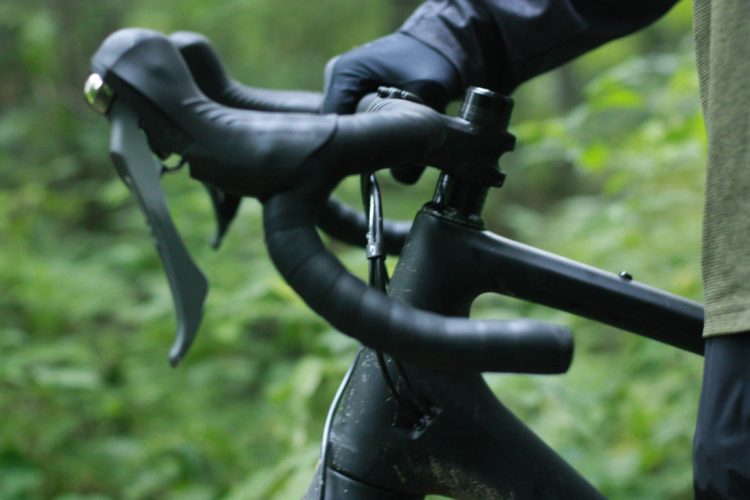
It looks like Shark Week from my perch above this cockpit.
In addition to the stellar aesthetic of the new Syncros Hixon iC Rise, it mounts up quickly and feels amazing in the hand. In the ten minutes it took to swap in this bar and stem combo, my bike shed 100 grams, despite the Hixon measuring 20mm wider than my previous setup. Syncros says that the integrated system is “lighter, stronger and more aerodynamic – redefining the classic bike aesthetic.” These are some design elements worth paying attention to.
[see_also id=’238907′]

Hixon iC Rise Specs
- 273g
- 40 or 50mm virtual stems
- 800mm width
- 1-1/8″ steerer diameter
- 6° backsweep
- 7° upsweep
- 15mm rise
- UD compression-molded carbon
- MSRP: $329


On The Trail
If you had told me several rides ago that a handlebar could noticeably improve the overall feel of my bike I would have chuckled and made a poke at marketing jargon.
I would have been dead wrong.
The innovative Hixon integrated cockpit is a clear departure from what I am accustomed to. The bars are 20mm wider and about 5mm higher than my previous setup, but the ride sensation is a more significant change than those numbers can illustrate. These bars made me question if my cockpit has been set up incorrectly for the last 20 years, and Syncros just fixed that mess for me.
I was initially skeptical of the static bar placement since I’m particular about how my cockpit is aligned. I assumed this stationary system would leave me cranky. My current whip has the same 65° head-tube angle as the Scott Genius that these bars were designed for, and their ergonomics and overall positioning feels perfect. I have no interest in changing the bar position and instead would like to know more about how Syncros managed to dial in these angles so well.
The bike I tested the Hixon iC on is a steel “enduro hardtail,” and unlike most steel frames I have owned, this thing is uber stiff. Its rigidity makes a fantastic platform for testing anything that claims to soak up trail chatter, as the frame does very little of that. This is where the Hixon really shines.
It is the first bar I have ridden that clearly takes some work out of keeping my eyes in my skull. Floating a fast clip over some of our local rock gardens I felt less of the typical jarring and vibration come through to my hands. It wasn’t a massive shift, like lowering tire pressure, but it was noticeable and appreciated. This version of the Hixon iC is 800mm wide and is designed to have the same ride characteristics when trimmed to 780mm. If you need a narrower bar, Syncros has several other options.


Conclusion
If forced to find a hitch in the Hixon iC I would point to the soft alloy mounting hardware. However, if I learn to be a little more gentle when working on my bike these lighter bolts are also… lighter.
[see_also id=’217318′]
The $329 price tag for a bar and stem is not within everyone’s upgrade budget, but you will not find a high-end carbon bar and stem that costs or weighs less. The closest match on the mainstream market is likely the Enve M7 bar and stem, with a combined weight of 337g at a total cost of $450. If you want to handle the Hixon iC before committing with your cash you can find them on some top end Scott bikes at your local dealer.
Now I want one on every bike in my apartment!
Thank Syncros for sending us the Hixon IC to test.




















0 Comments